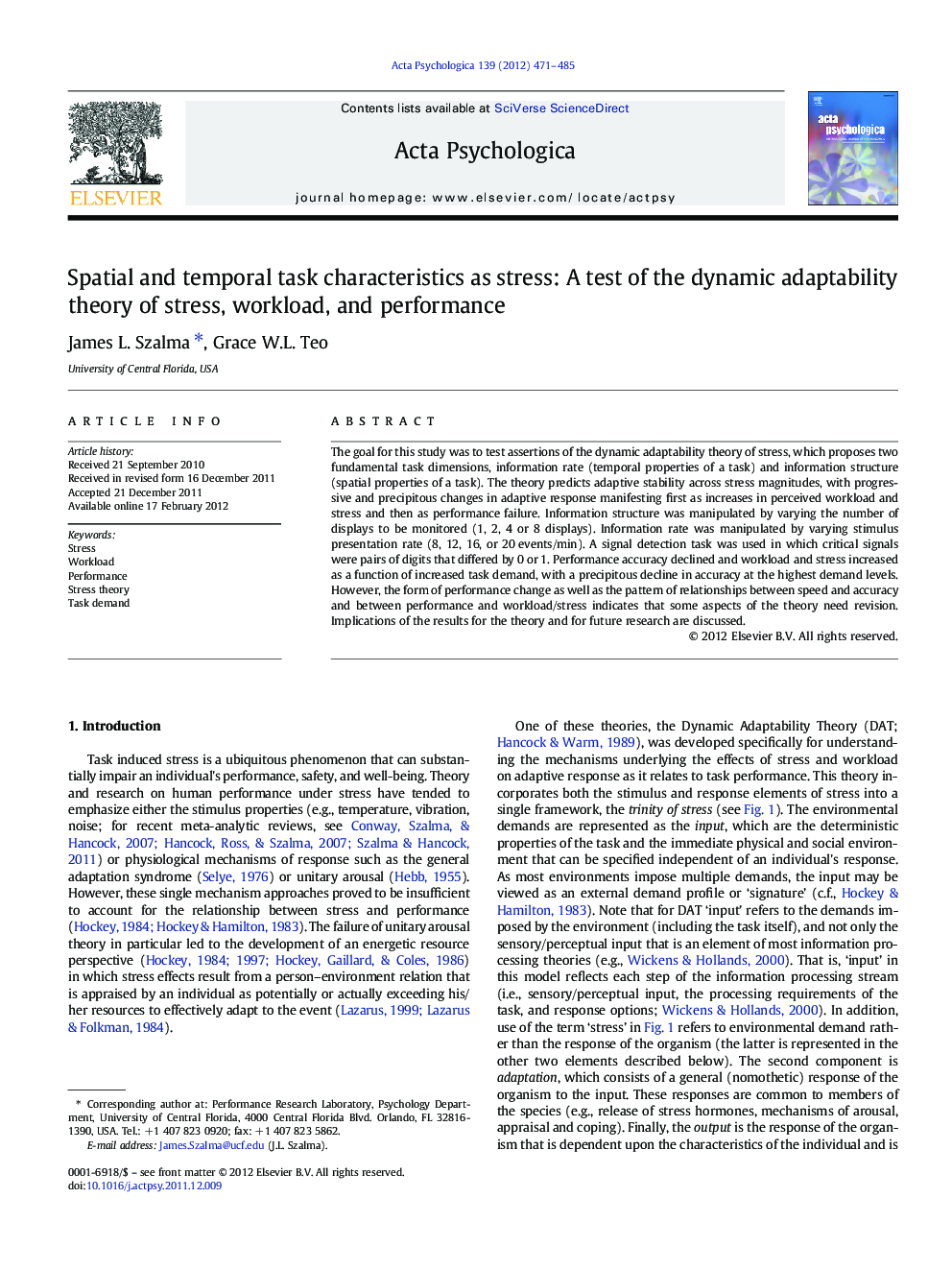| Article ID | Journal | Published Year | Pages | File Type |
|---|---|---|---|---|
| 920061 | Acta Psychologica | 2012 | 15 Pages |
The goal for this study was to test assertions of the dynamic adaptability theory of stress, which proposes two fundamental task dimensions, information rate (temporal properties of a task) and information structure (spatial properties of a task). The theory predicts adaptive stability across stress magnitudes, with progressive and precipitous changes in adaptive response manifesting first as increases in perceived workload and stress and then as performance failure. Information structure was manipulated by varying the number of displays to be monitored (1, 2, 4 or 8 displays). Information rate was manipulated by varying stimulus presentation rate (8, 12, 16, or 20 events/min). A signal detection task was used in which critical signals were pairs of digits that differed by 0 or 1. Performance accuracy declined and workload and stress increased as a function of increased task demand, with a precipitous decline in accuracy at the highest demand levels. However, the form of performance change as well as the pattern of relationships between speed and accuracy and between performance and workload/stress indicates that some aspects of the theory need revision. Implications of the results for the theory and for future research are discussed.
